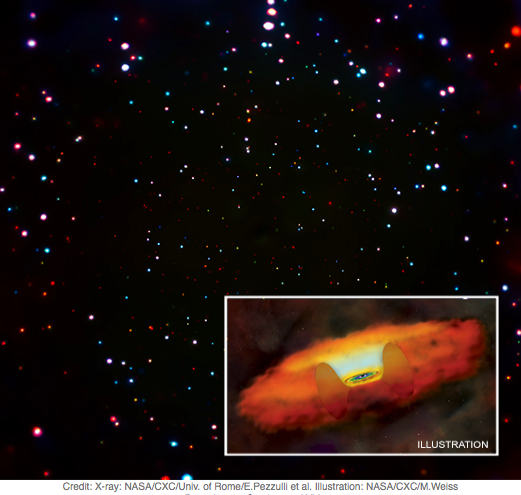
Supermassive black holes (SMBHs) exist in the centre of most, if not all, galaxies. An open question in astrophysics, however, is how these enormous black holes, that weigh billion times the mass of the sun, existed in the early universe.
The Big Bang took place about 13.8 billion years ago. Observational studies have shown that SMBHs existed about 12.8 billion years ago. This means that they grew rapidly in the first billion years after the Big Bang. Black holes grow by consuming huge amounts of material and during this process, that requires time, they emit X-rays. Scientists should, therefore, be able to detect signs of this growth using X-ray telescopes, such as NASA’s Chandra X-ray observatory. However, these growing SMBH have proved to be elusive.
In an attempt to shed light on this problem, a team of astrophysicists examined different theoretical models and tested them against observational data. Their findings suggest that black hole feeding may turn on abruptly and last for short periods of time, making their growth difficult to detect. During these rare bursts black holes grow intensively and their mass increases from only about a hundred suns to billion times the mass of the Sun. Their analysis also revealed that although these early black holes were likely obscured by thick clouds of dust and gas, X-rays would be able to penetrate these clouds. Therefore, by looking at large areas of the sky in X-rays, astronomers will be able to find these early, fast growing black holes and confirm the predictions of these theoretical models.
Publication: Pezzulli et al. 2017
Sources: Chandra
